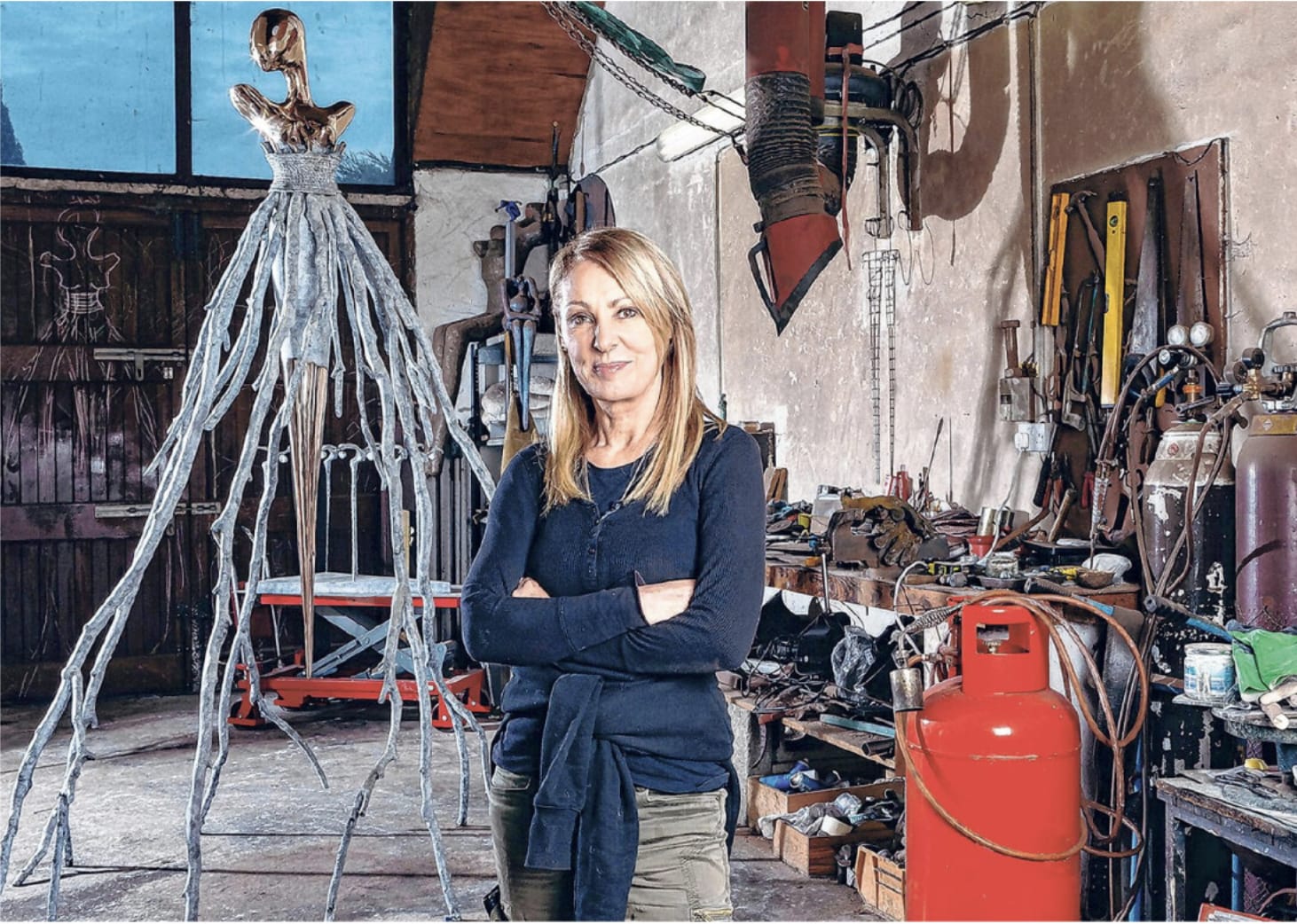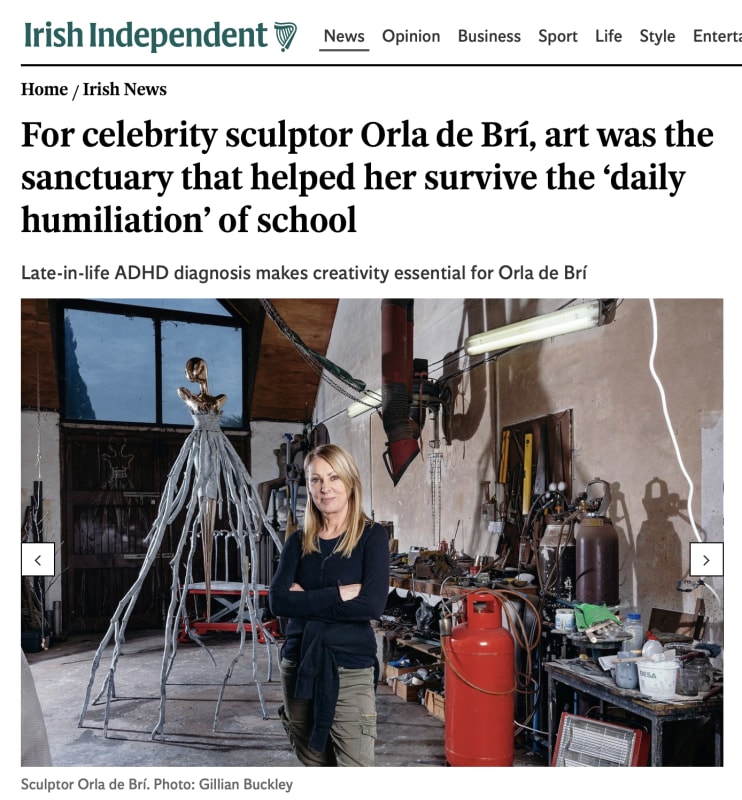For celebrity sculptor, art was the sanctuary that helped her survive the 'daily humiliation' of school
Late-in-life adhd diagnosis makes creativity essential for orla de brí
Melanie Finn, Irish Independent
Saturday, October 4, 2025

Orla in her studio - Photo: Gillian Buckley
When celebrity artist Orla de Brí was eventually diagnosed with ADHD in her 50s, everything suddenly made sense.
Like many neurodiverse creatives, the Dublin-born sculptor struggled in school, got bored easily, and would lose herself for hours in drawing and art.
"I was always outside the door of the class because I couldn't keep still,” she said. "When I got out of school, I went, 'I'll never talk about that again'.
"I was hoping everything would be better after school - and it was,” she said.
De Brí, who also has dyslexia, went on to carve out a hugely successful career for herself. She specialises in large-scale metal pieces, and has created eye-catching artwork for everyone from Desmond Tutu to Hilary Swank.
But it wasn't until her children with husband Finn - Jeda (32) and Cal (30) - were both diagnosed with ADHD that she went on a journey of self-discovery.
"I was only diagnosed a few years ago,” De Brí said. "When my kids were diagnosed as adults, they both came back and were like, 'This is definitely from you'.
"They are both creatives, and they present slightly different to me with the ADHD. It's definitely a family thing and I think my dad had it.”
Her father, Fred Corcoran, who died last March at the age of 93, had a huge influence on her career.
Bringing De Brí to see a Salvador Dali exhibit in Spain as a teenager had a "profound effect” on her. One of the pieces in her new solo exhibition - Out of the Shadows, which runs at the Solomon Gallery until October 18 - is dedicated to her late father.
"He encouraged [my career]. He drew and painted himself,” De Brí said.
"But when I said to him at 14, 'I want to be a sculpturer', he said, 'Ah no, do it as a hobby'.
"He couldn't really see how you would make a career out of that. And I can understand that now, looking back.”
Like many neurodiverse people, De Brí found mainstream school a struggle. She does not look back fondly on her early days.
"They didn't know anything about dyslexia, so it was daily humiliation in front of your peers - so that's never great,” she said. "And the school would have been fairly strict, as well.
"I would have quite a hyperactive form of ADHD, so I was always making art in my spare time, just constantly.
"I used to draw or write poetry, and that made me forget about the hassle of school. I would do it in the class because I'd get bored. So it was always a sanctuary for me, to draw or to make work.”
After graduating, De Brí studied at the Grafton Academy of Fashion Design before going on to do a course in metal sculpture that she "completely loved”.
This led to a night course in bronze casting in NCAD before she set up her own studio. She began working primarily in steel and bronze, and has accumulated an impressive body of work during her lengthy career.
She has nearly 30 pieces publicly exhibited in cities including Beijing, Hong Kong and London, and also features in many private collections.
One of her most well-known pieces in Ireland is a five-metre high, 24ct gold-leaf tree perched on the roof of Cobh's 14th-century Belvelly Castle.
De Brí also created the memorial dedicated to the late Marian Finucane, Together we will Explore, which sits outside RTÉ.
Given De Brí's neurodiversity, making art at her studio in Ashbourne is essential to calm her busy mind.
"When I go into the studio, I completely relax and I'll just focus on the work,” she said. "So even if you're worried or stressed, that goes away within five minutes and I'm just immersed in the work. I lose time and don't realise - I could be there for four or five hours. I'm very lucky to have found that.”
"With ADHD, you have to find your niche and find what you're good at. If you find that, it's much easier to navigate it, because you like what you're doing and you can have this laser focus for work.”
As for what she wants to see unveiled in next week's Budget 2026 announcement, keeping the Basic Income for the Arts scheme, a pilot introduced in 2022, is "essential” to support the sector.
"That would be seen as a huge appreciation of the arts and is especially important for those in the early stages,” she said. "For a small country, we have a massive amount of artists and creatives.
"Art is food for the soul so it needs to be nurtured.”

